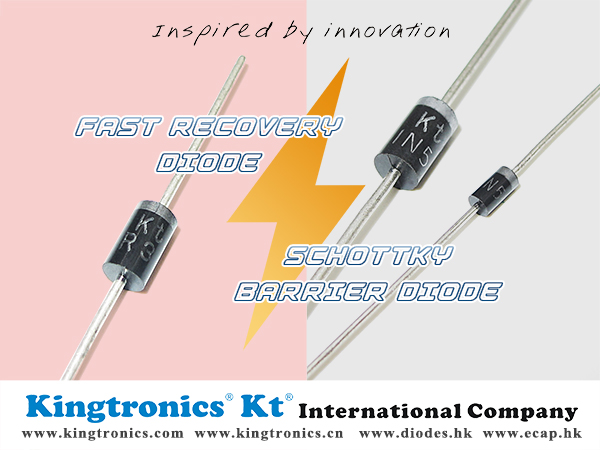Kt Kingtronics Recovery Diodes and Schottky Diodes
1. Fast recovery diode
Fast recovery diode, FRD for short, is a semiconductor diode with good switching characteristics and short reverse recovery time. It has unidirectional conductivity like ordinary diodes. It is mainly used in electronic circuits of switching power supplies, pulse width modulators, inverters, etc. It is mainly used as high-frequency rectifier diodes, freewheeling diodes or damping diodes.
2. Schottky Barrier diode
The Schottky Barrier diode, abbreviated as SBD, is not made by using the principle of PN junction.
It is a semiconductor made by using metal as the anode and N-type semiconductor as the cathode, using the barrier formed on the contact surface of the two with rectification characteristics. A semiconductor device is a kind of hot carrier diode.
Schottky diodes are mainly used in circuits as rectifier diodes, freewheeling diodes, protection diodes, etc., and are mainly used in low-voltage, high-current circuits, such as switching power supplies, Frequency converter, inverter, microwave communication.
3. Features of fast recovery diodes and Schottky Barrier diode
a. The reverse recovery time of fast recovery diodes is several hundred nanoseconds, while Schottky Barrier diode are faster than it, even several nanoseconds;
b. The reverse breakdown voltage of fast recovery diodes is high, generally higher than 200V, or even several thousand volts, while the reverse breakdown voltage of Schottky Barrier diodes is very low, generally below 100V, and some will be higher;
c. The power consumption of fast recovery diodes is relatively large, while Schottky Barrier diodes have short reverse recovery time, low loss and low noise.










